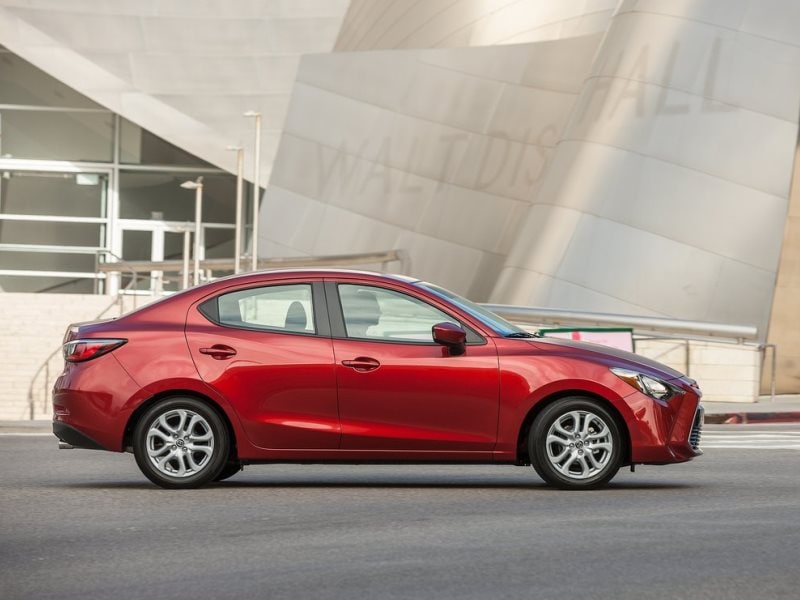Recent Articles
Popular Makes
Body Types
2016 Scion iA: First Drive Review
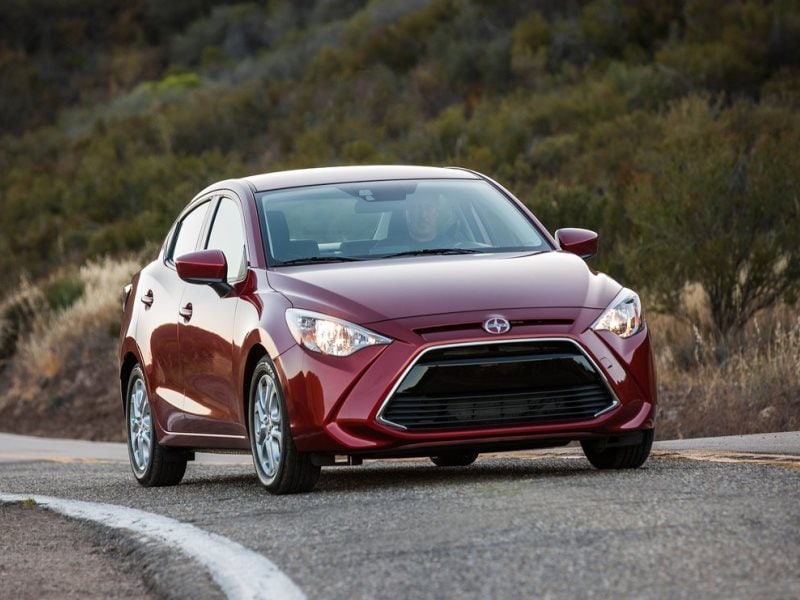
Not only is the 2016 Scion iA the first subcompact sedan from Toyota’s “youth” brand, it’s also a joint manufacturing project with Mazda. It’s based on the new (second) generation of Mazda2, but while that car will always be a hatchback in the United States’ market, the Scion iA will always be a sedan. And one shall never be the other, not on American soil at least.
Naturally, Scion would like younger people to buy its cars, but the iA could also appeal to more grown-up types perhaps looking to downsize yet still expecting modern features. In many ways, the iA represents a maturing of the brand.
Pricing
Scion calls its single trim level approach “mono spec” — meaning one basic price for a well-equipped car, with just a few options to choose from, such as transmission, paint color and navigation. The 2016 iA starts at $16,495 (including $795 destination) and standard equipment includes 16-inch alloy wheels, Bluetooth, push-button start, air conditioning, cruise control, two USB ports, and power windows. The basic transmission is a six-speed manual; the six-speed automatic option is an extra $1,100.
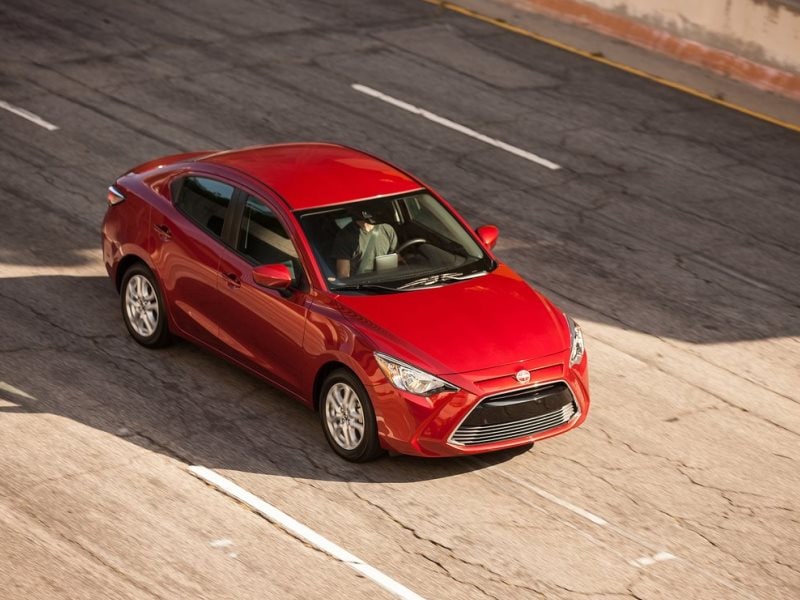
Design
There will be a Mazda2 sedan in other countries and apart from the nose, it looks just like this. Certainly not unpleasant, at least from the sides and the rear. The Scion-centric front will have its fans and detractors. If anything, there’s a flavor of Lexus in that huge, angular grille. What are the odds on that being the first thing to be changed when there’s a mid-cycle revamp?
The interior is also much like the Mazda2, but that means an uncluttered dashboard and cabin materials of decent quality, especially for the price.
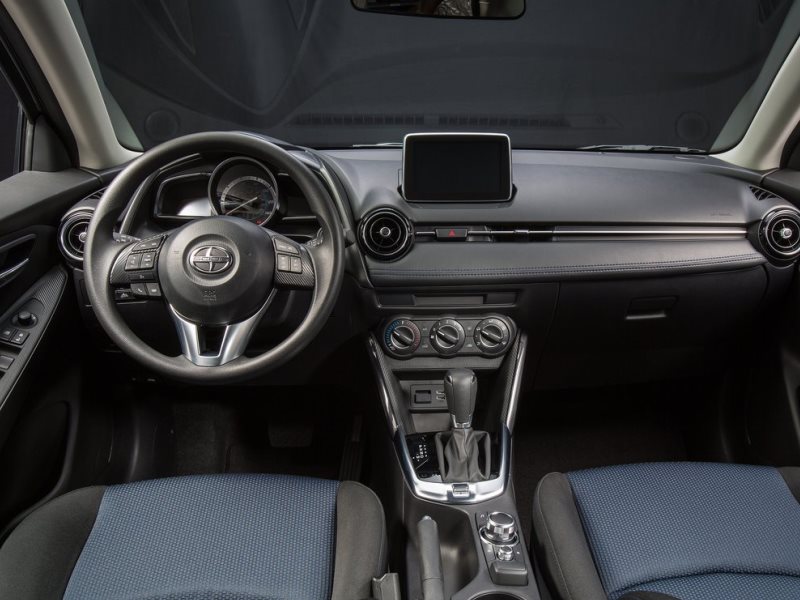
Comfort and Cargo
For a subcompact sedan, the trunk is a really useful size: 13.5 cubic feet, sufficient for a few suitcases. The rear seats will also split and fold in the time-honored 60/40 fashion for those times when more space is needed.
When fitting humans in, it’s similar good news. The front seats are comfortable and when setting the driving position for an adult male of average height (the steering wheel adjusts for both height and reach), that same male can sit in the back, slide his feet under the seat in front and generally not find too much to gripe about — for a short journey, at least. One downside is a lack of shoulder room — there’s no getting away from the fact that the iA is quite narrow. The other moan is a short center armrest that doesn’t slide forward and becomes uncomfortable pretty much immediately.
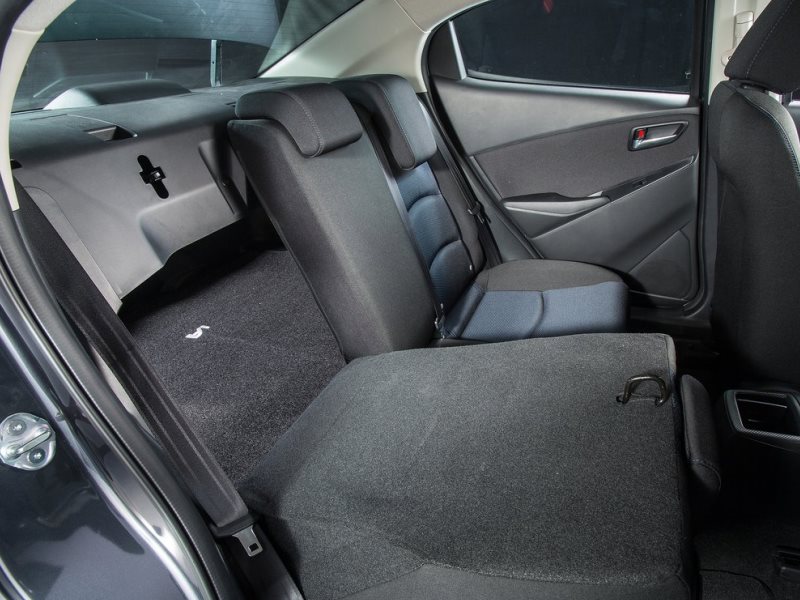
Features and Controls
Buyers with limited budgets have never had it so good. The dominant feature in the center console is a seven-inch touchscreen for the infotainment system that doubles as a monitor for the rearview camera. This system also has the newest voice recognition software to decipher spoken commands and then place phone calls or accept navigation destinations.
We’ve all come to expect air conditioning and cruise control as standard, but it’s still great when the sticker price comes in comfortably under $20,000 even when alloy wheels and an automatic transmission are part of the deal.
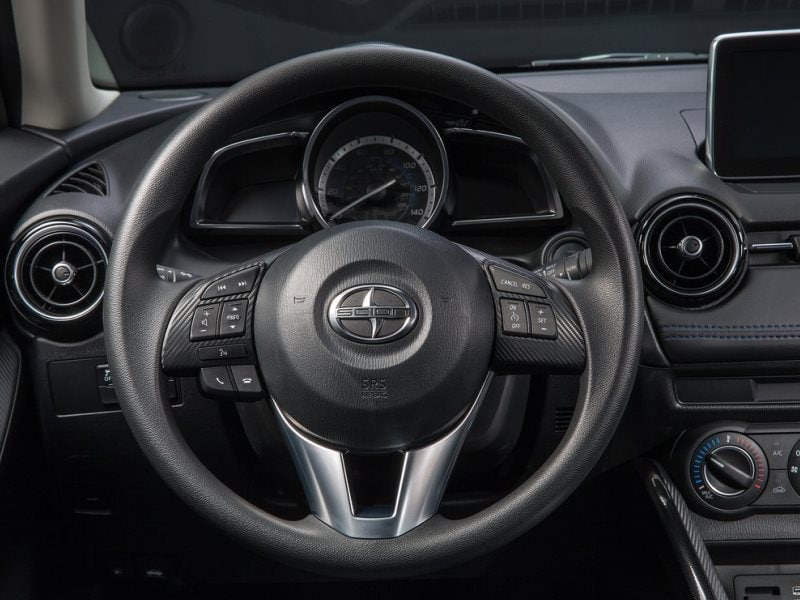
Safety
Many modern higher-end cars are now enjoying safety features where sensors and clever computer programming decide if the vehicle has to apply the brakes autonomously. The iA has the same kind of thing. It’s a low-speed collision warning system that works up to 18 mph while scanning 30 feet in front. It will first flash a light, emit an audible warning signal and pre-charge the brakes if it detects an imminent coming-together. If the driver doesn't respond within a certain time, it will automatically brake the car.
This is standard equipment, along with ABS, traction control, rearview camera, six airbags and Toyota’s Smart Stop brake override system. For a budget-proved subcompact, this could be one of the major selling points.
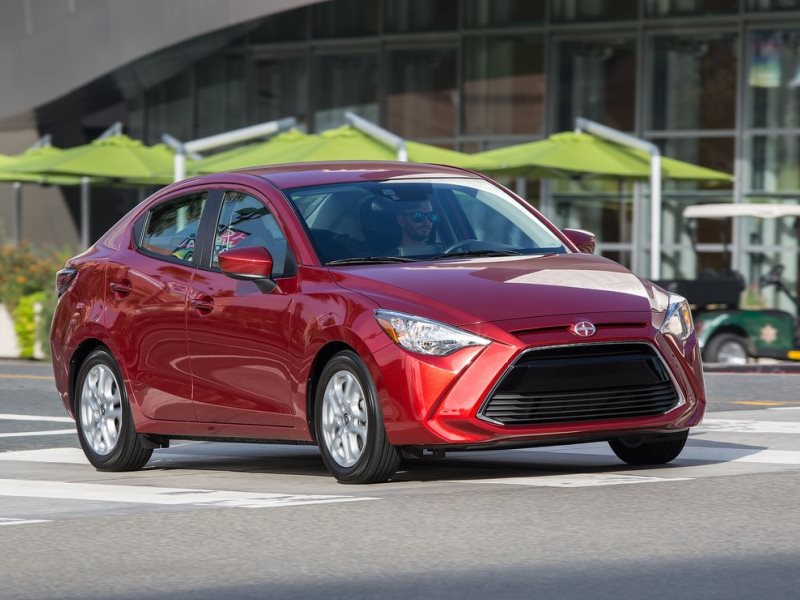
Engines and Economy
Considering the sole source of propulsion for the front wheels is a 1.5-liter four-cylinder making a relatively feeble 106 hp and 103 lb-ft of torque, the iA zips along fairly well. The lack of turbocharger is offset by a curb weight that comes in slightly under 2,500 pounds.
Economy-wise, the EPA puts the version with the manual transmission at 31 mpg city, 41 mpg highway and 35 mpg combined. Excellent numbers, but the auto version does even better with 33/42/37.
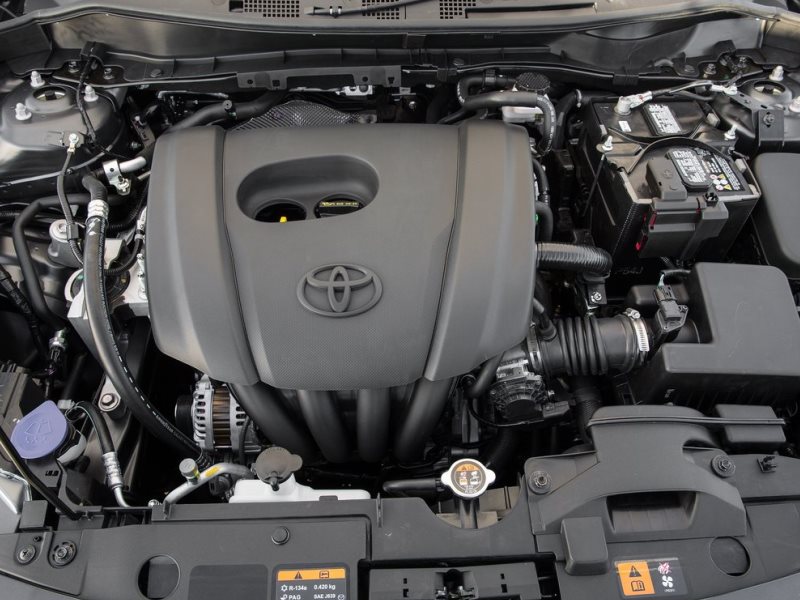
Performance
If this was a theater performance, the iA would be the Wednesday matinee with the understudy taking over from the lead actor. Somehow, the star quality is not there. As mentioned, the engine is not that powerful but is at least willing to rev high in search of whatever muscle it has to give. It’s even game to go up steep hills.
The crucial thing is that this is not a chassis to inspire the driver to get busy with the right foot. The short wheelbase suffers over rougher surfaces, the suspension isn’t exactly tuned for sportiness, and the steering feels over-assisted and vague. But as an urban and/or suburban runabout, it probably does all that’s expected of it.
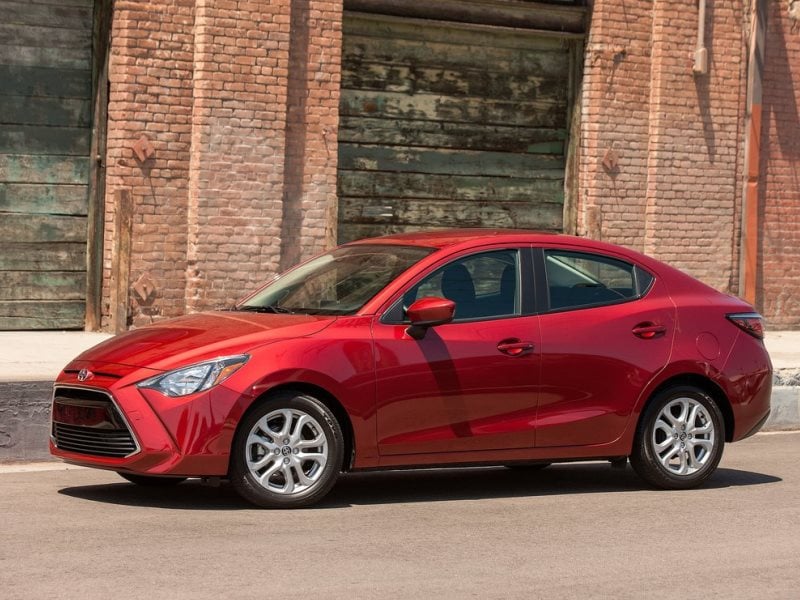
Final Thoughts
It’s time to fire up the calculator. The 2016 Scion iA certainly offers value for money, so if anyone is leaning toward a Mazda hatchback for greater practicality, or a Ford Fiesta (in sedan or hatchback form), keep in mind how equipping those cars to the iA’s level will push the price up further.
Then again, the Fiesta is such a great-handling car that some people could well be swayed to spend more. If the Scion iA is any indication of the new Mazda2’s driving talents, then enthusiasts should just head straight for the Ford dealership. But if that aspect of driving is a low priority, the iA starts to look more attractive.
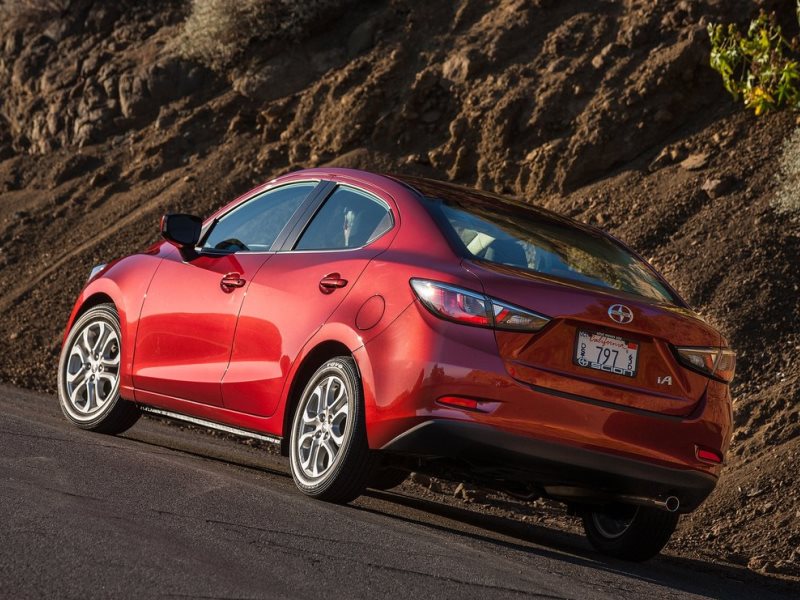
Pros and Cons
Pros:
- Excellent value.
- A more mature effort from Scion.
Cons:
- Polarizing front end design.
- Lackluster dynamics.
